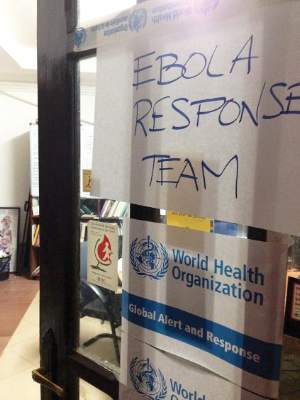The struggle to defeat Ebola virus disease continues globally, although it may not always make the headlines. To catch up on what you may have missed, here are some notable news items and journal articles published over the past few weeks that are worth a second look.
The World Health Organization declared the end of Ebola virus transmission in the Republic of Guinea on June 1, 2016. The country has entered a 90-day period of heightened surveillance to ensure that any new cases are identified quickly before they can spread to other people.
Ebola virus remained infectious for more than 30 days in human blood spotted onto Sierra Leonean banknotes and in syringe needles under hospital and environmental conditions, according to research published in the Journal of Infectious Diseases. The authors said this indicates that Ebola virus–contaminated items may pose a serious risk to humans.
The Defense Threat Reduction Agency (DTRA) has awarded a 1-year, $3.4 million contract award to Southwest Research Institute and collaborator Texas Biomedical Research Institute to combine two available medications and test the resulting combination drug therapy against the Ebola virus.
The Idylla Ebola Virus Triage Test, distributed by Janssen Pharmaceutica NV, was granted Emergency Use Authorization by the Food and Drug Administration. The test is a diagnostic that detects the presence of the Ebola Zaire virus in patients with signs and symptoms of Ebola virus disease and was jointly developed by Janssen Diagnostics, a division of Janssen Pharmaceutica, Biocartis NV, and the Belgium Institute of Tropical Medicine.
A study by researchers at the University of Texas found lethal models of disease for Bundibugyo, Sudan, and Zaire species of Ebolavirus in the domestic ferret using wild type nonadapted viruses. The authors said this is the only known small animal model developed for Bundibugyo and the only uniformly lethal animal model for Bundibugyo.
Trophoblast infection may be a mechanism of transplacental ebolavirus transmission , according to research published in the Journal of Infectious Diseases.
A majority of participants in a survey conducted after approximately 15 months of an Ebola epidemic in Sierra Leone expressed at least some confidence in the health care system’s ability to treat patients suspected to have Ebola. Respondents from areas with active Ebola transmission had higher confidence in the health care system, as did respondents with higher education levels.
Persons who died of Ebola virus disease at home in rural communities in Liberia and Guinea resulted in more secondary infections than persons admitted to Ebola treatment units, according to a report in Emerging Infectious Diseases. The authors said intensified monitoring of contacts of persons who died of EVD in the community is an evidence-based approach to reduce virus transmission in rural communities.
The World Health Organization declared the end of the most recent outbreak of Ebola virus disease in Liberia on June 9, 2016. The announcement came 42 days after the last confirmed Ebola patient in Liberia tested negative for the disease for the second time. Liberia now enters a 90-day period of heightened surveillance to ensure that any new cases are identified quickly and contained before spreading.
The Ebola virus may be even more widespread than previously suspected, according to a study in Mammal Review. Researchers said the most favorable area for the Ebola virus is significantly associated with the presence of the virus in nonhuman mammals, and their model suggested additional favorable areas are found throughout the coastal areas of West and Central Africa.
Sexual transmission of the Ebola virus can have large effects on epidemic dynamics , according to a study in Biology Letters. The authors say these effects can increase attack ratios from 25% in scenarios without sexual transmission, but with contact-transmission-reducing behavior, up to 80% in equivalent scenarios with sexual transmission.
A retrospective study of Ebola virus disease patients in Sierra Leone found that significant predictors for patient death were shorter time from symptom onset to admission, male sex, high viral load on initial laboratory testing, severe pain, diarrhea, bloody feces, and development of other bleeding manifestations during hospitalization. The authors noted that these risk factors for death could be used to identify patients in need of more intensive medical support.
Parenteral or aerosol routes of Ebola virus exposure in nonhuman primates required higher doses of the virus to produce disease , according to a recent study.
An epidemiological study of 139 laboratory-confirmed Ebola virus disease patients in western Sierra Leone between November 2014 and January 2015 found that mortality of EVD is associated with an older age, fever, and probably hiccups.
A study in the International Journal of Infectious Diseases suggests that the experience of three mass gathering events in Africa during the Ebola epidemic illustrates that such events can be held safely, provided that countries put measures in place for enhanced surveillance and response systems for communicable diseases.
A study in the Journal of Infectious Diseases compared the Ebola virus epidemic in 1976 to the 2013-2016 epidemic , and identified key scientific approaches used in 1976 and their relevance to the 3-country (Guinea, Sierra Leone, and Liberia) West African epidemic.
On Twitter @richpizzi




